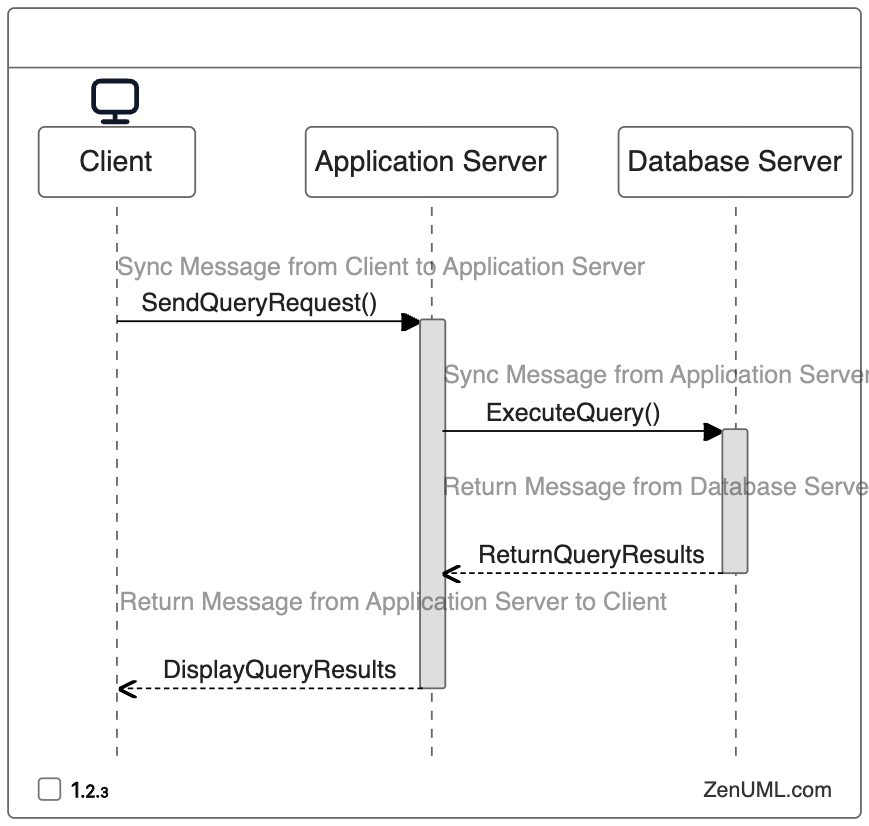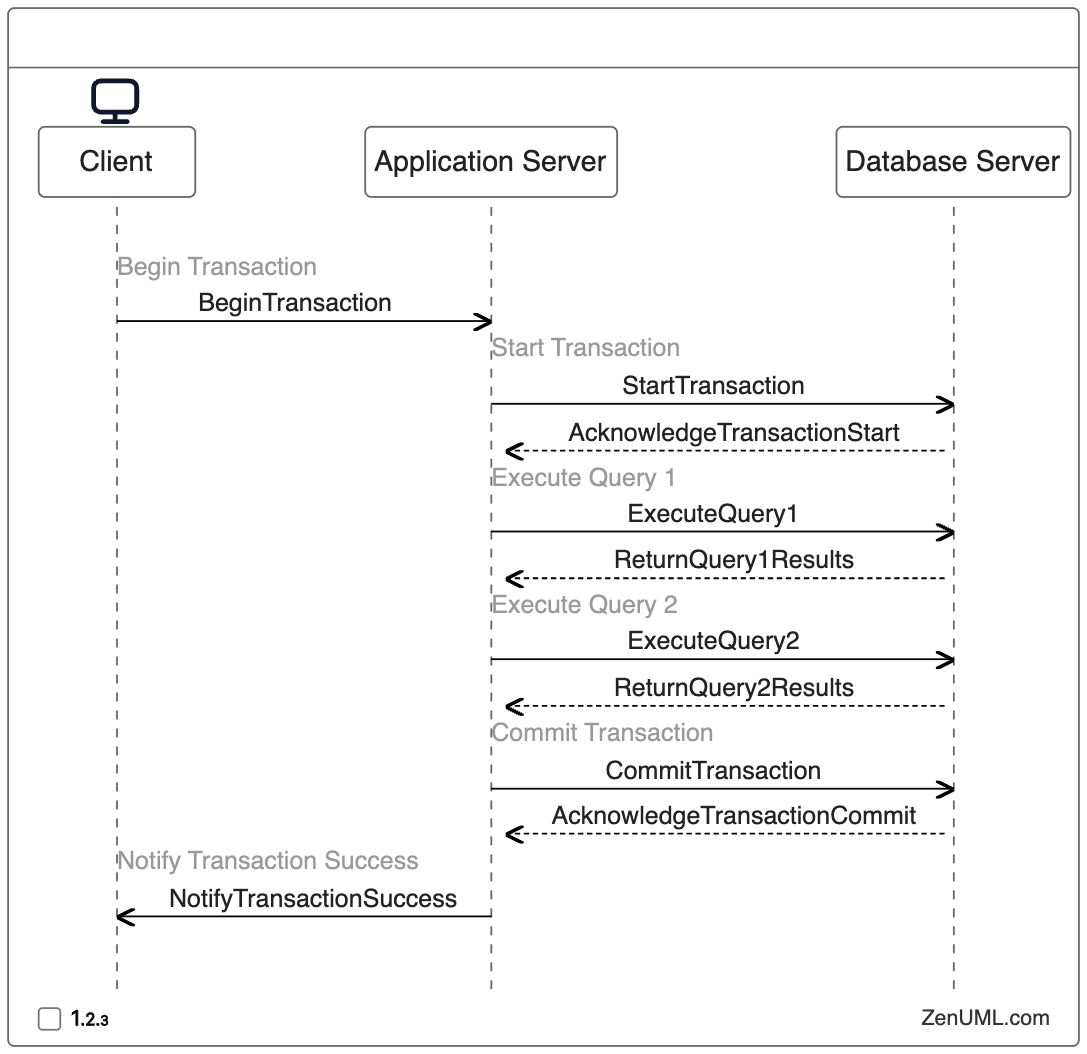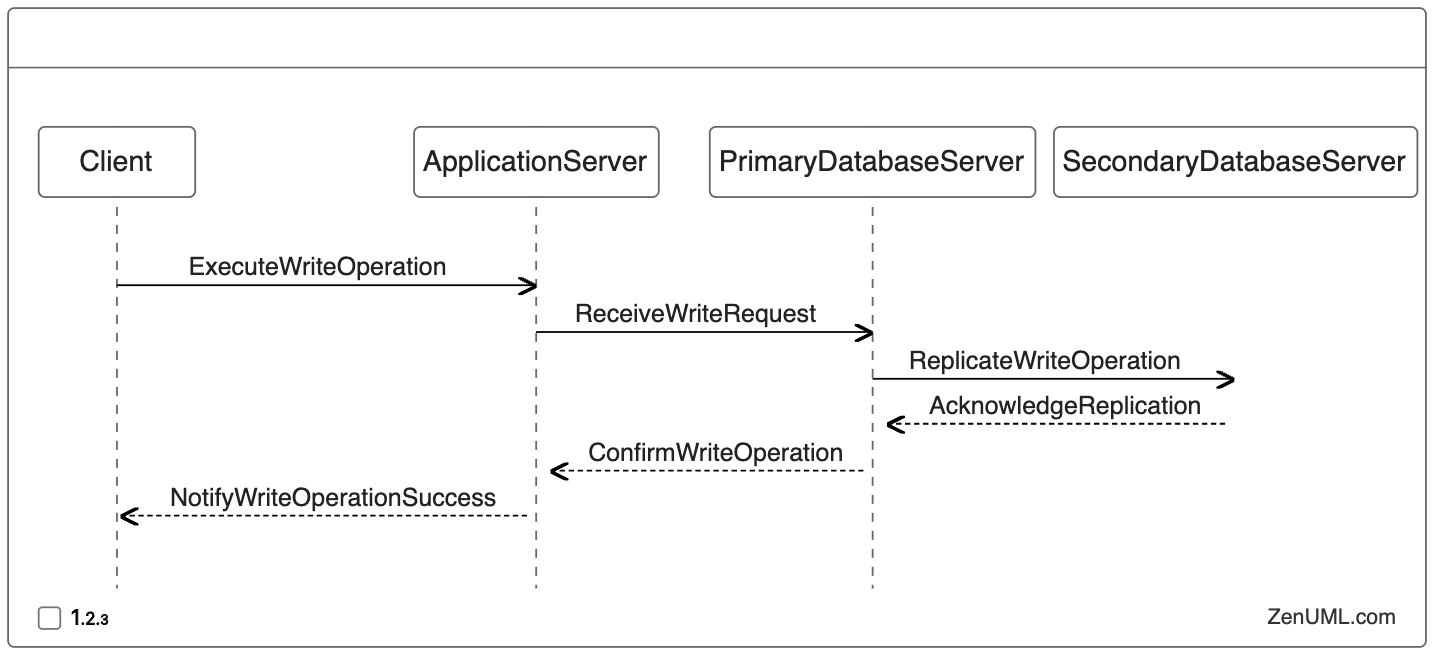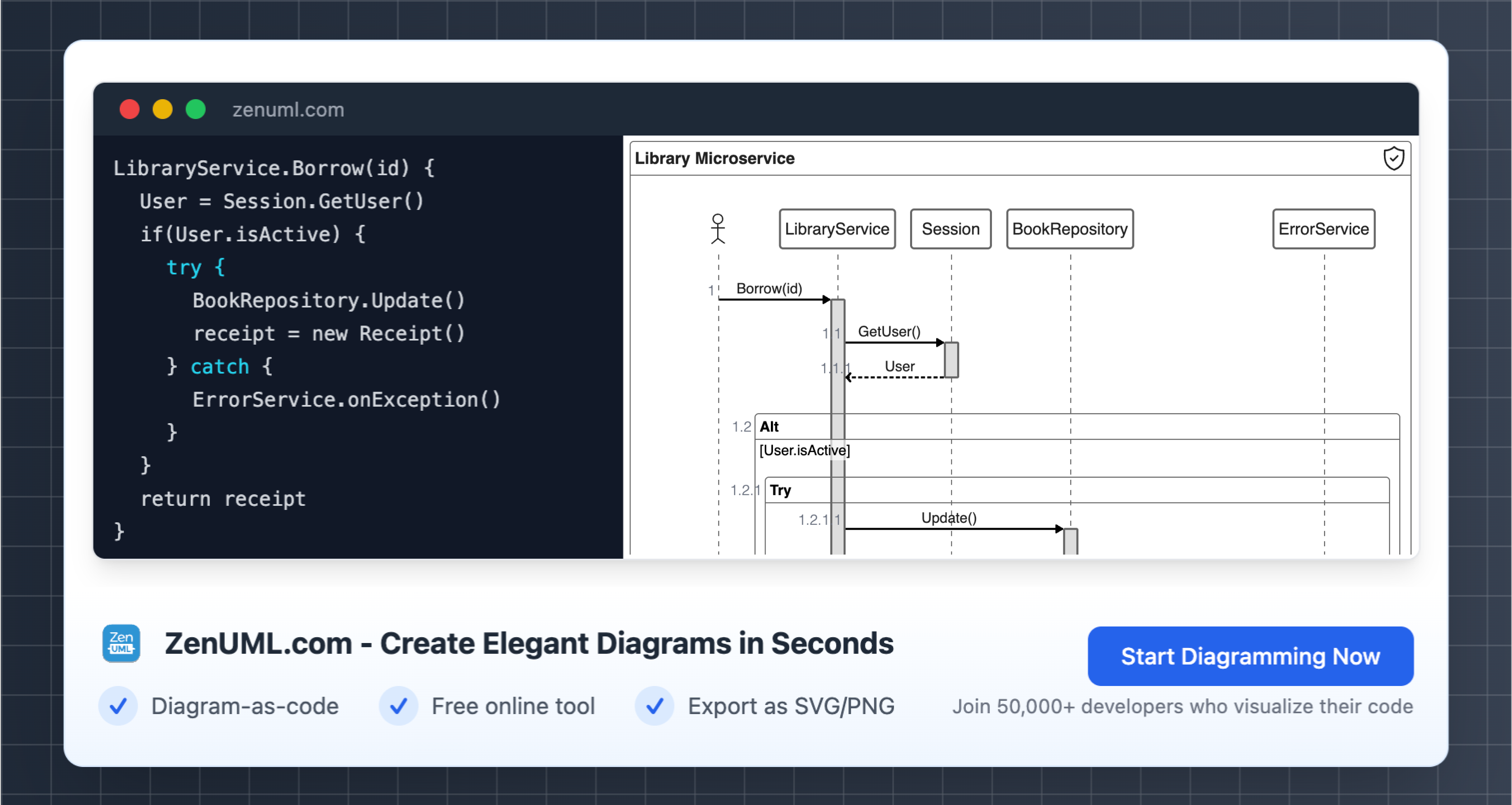Introduction
In the dynamic world of data management, understanding the intricate interactions between various components of a database system is paramount. Sequence diagrams, a powerful visual tool, can provide invaluable insights into these complex relationships, empowering database administrators, developers, and architects to optimize system performance, troubleshoot issues, and make informed decisions. This blog post will explore the significance of sequence diagrams in the context of database systems, guiding you through practical examples and highlighting the use of ZenUML sequence diagrams to enhance your understanding.
The Importance of Sequence Diagrams in Database Systems
Database systems are the backbone of modern applications, responsible for storing, retrieving, and managing vast amounts of data. As these systems grow in complexity, the need for clear and concise communication among stakeholders becomes increasingly crucial. Sequence diagrams bridge this gap by providing a standardized visual representation of the dynamic interactions that occur within a database system.
According to a study conducted by the IEEE, the use of sequence diagrams can improve the overall understanding of a system by up to 50% compared to textual descriptions alone [1]. This improved comprehension can lead to more efficient development, faster problem-solving, and better decision-making processes.
Practical Examples of Sequence Diagrams for Database Systems
To demonstrate the practical applications of sequence diagrams in database systems, let's explore a few real-world scenarios:
Example 1: The Query Execution Workflow
One of the most common scenarios in a database system is the execution of a user query. Let's visualize this process using a ZenUML sequence diagram:

This diagram illustrates the flow of events, from the client initiating a query request to the database server returning the results back to the client through the application server. By understanding this sequence, developers can optimize the query execution process, identify potential bottlenecks, and ensure efficient data retrieval.
Example 2: Transaction Management
Transactions are a critical component of database systems, ensuring the integrity and consistency of data. Let's examine the sequence of events involved in a typical transaction:

This sequence diagram demonstrates the steps involved in a transaction, including the initiation, execution of queries, and the final commit or rollback. By understanding this process, developers can ensure the proper handling of transactions, prevent data inconsistencies, and implement effective error handling mechanisms.
Example 3: Replication and High Availability
In large-scale database systems, replication and high availability are crucial for ensuring data redundancy and fault tolerance. Let's explore the sequence of events in a replication scenario:

This diagram illustrates the flow of a write operation, where the primary database server receives the request, replicates the data to a secondary server, and then confirms the successful completion of the operation to the client. Understanding this sequence can help database administrators ensure the reliability and availability of their systems, implement effective fail-over mechanisms, and optimize the replication process.
Conclusion
Sequence diagrams are a powerful tool for enhancing the understanding of database systems. By visualizing the dynamic interactions between various components, database administrators, developers, and architects can optimize system performance, troubleshoot issues, and make informed decisions. The use of ZenUML sequence diagrams provides a convenient and efficient way to create and integrate these diagrams into your database system documentation and communication.
As you continue to work with database systems, we encourage you to explore the versatility of sequence diagrams and leverage the capabilities of ZenUML to improve the overall understanding and management of your database infrastructure. Remember, clear and concise communication is the key to successful database system development and maintenance.
We'd love to hear your thoughts and experiences with using sequence diagrams in your database projects. Feel free to leave a comment below and share your insights with the community.
Try ZenUML now!
Zenuml detailed feature roadmap available here.

